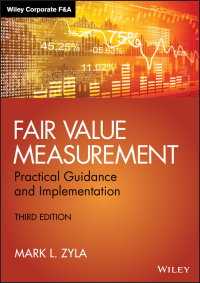Question
TRUE OR FALSE 1.Obsolescence arises when the asset is no longer useful to the firm because of an increase in the volume of operations. 2.
TRUE OR FALSE
1.Obsolescence arises when the asset is no longer useful to the firm because of an increase in the volume of operations.
2. The residual value of an asset shall be reviewed at least at each financial year-end.
3. The residual value of an asset shall be reviewed at least at each financial year-end.
4. Each part of an item of PPE with a cost that is insignificant in relation to the total cost of the item shall be depreciated separately.
5. If such expenditures are immovable in the sense that they are attached to the building in such a manner that the removal thereof may destroy the building, they are charged to the building account.
6. An expenditure that benefits only the current period is a revenue expenditure and therefore reported as an asset.
7. If subsequent cost will increase the future service potential of the asset, the cost should be capitalized.
8. An expenditure on an intangible item that was initially recognized as an expense shall not be included as part of the cost of intangible asset at a later date.
9.The cost of a separately acquired in tangible asset compromises its purchase price, excluding any import duties and nonrefundable purchase taxes after deducting trade discounts and rebates and any directly attributable costs of preparing the asset for its intended use.
10.If the franchise is granted indefinitely or perpetually, the cost of the franchise shall not be amortized but tested for impairment at least annually.
11. The residual value of an asset shall be reviewed at least at each financial year-end and if expectation differs from the previous estimate, the change shall be accounted for a change in an accounting policy.
12. A prepayment can be recognized as an asset when payment for goods has been made in advance of the entity obtaining a right to access those goods or when payment for services has been made in advance of the entity receiving those services.
13.If such expenditures are movable, they are charged to furniture and fixtures and depreciated over their useful life.
14.Depreciation ceases when the asset is derecognized.
15. If subsequent cost maintains the existing level of performance, the cost should be capitalized.
16.Physical depreciation is related to the depreciable assets wear and tear and deterioration over a period.
17. An expenditure that benefits the current period and future periods is a capital expenditure and therefore reported as an asset.
18. Real property taxes are treated as outright expense.
19. If the franchise is granted for a definite period, the cost of franchise shall be amortized over the useful life or definite period whichever is shorter.
CHOICES
20.Three essential criteria in the definition of an intangible asset, except:
a. Measurable and probable
b. Identifiability
c. Future economic benefits
d. Control
21.Costs chargeable to land, except:
a. Purchase price
b. Unpaid taxes up to date of acquisition assumed by the seller
c. Cost of clearing and demolishing unwanted old structure
d. Payments to tenants to induce them to vacate the land
22.Costs chargeable to land, except:
a. Cost of clearing and demolishing unwanted old structure
b. Cost of option to buy the acquired land
c. Fees for registration and transfer of title
d. Cost of temporary improvements such as cost of grading
23.The following costs of an intangible asset are expensed immediately, except:
a. Costs of introducing a new product or service, including cost of advertising
b. Administration and other general overhead costs
c. Cost of testing whether the asset is functioning properly
24.Direct attributable costs of an intangible asset, except:
a. Trade discounts and rebates arising directly from bringing the asset to its working condition
b. Costs of employee benefits arising directly from bringing the asset to its working condition
c. Professional fees arising directly from bringing the asset to its working condition
25.Costs of building when purchased, except:
a. Legal fees and other expenses incurred in connection with the purchase
b. Unpaid taxes after date of acquisition
c. Payments to tenants to induce them to vacate the building
d. Purchase price
NEED ANSWER ASAP.
Step by Step Solution
There are 3 Steps involved in it
Step: 1

Get Instant Access to Expert-Tailored Solutions
See step-by-step solutions with expert insights and AI powered tools for academic success
Step: 2

Step: 3

Ace Your Homework with AI
Get the answers you need in no time with our AI-driven, step-by-step assistance
Get Started


